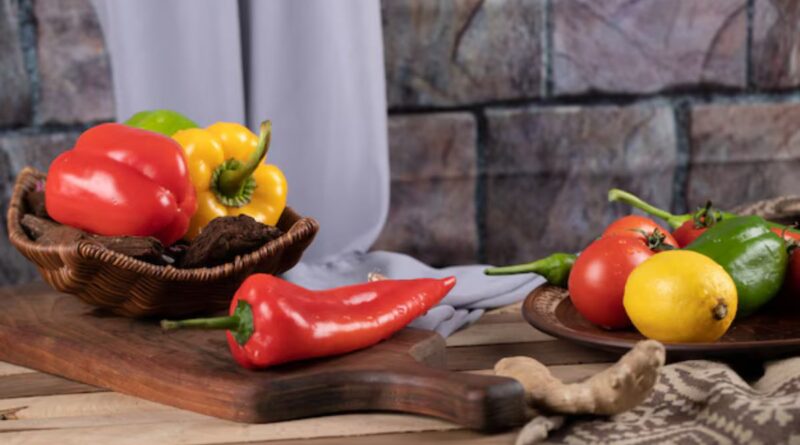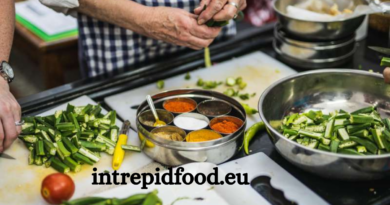From Farm to Table: The Story Behind Chile Pasilla
Chile pasilla is more than just a spice; it’s a vibrant thread in the rich tapestry of culinary traditions. Known for its deep, smoky flavor and versatility, this beloved chili pepper has made its way into countless dishes across various cuisines. But what truly sets chile pasilla apart? It’s not only about taste—it’s also about story, culture, and sustainability.
In this journey from farm to table, we will explore the fascinating history of chile pasilla, how it’s cultivated with care, and the many ways it can enhance your meals. We’ll also delve into its health benefits and consider the impact of sustainable farming practices on our environment. Join us as we uncover everything there is to know about chile pasilla—your next favorite ingredient might be just around the corner!
History and Origin of Chile Pasilla
The chile pasilla has a rich history that dates back centuries. Originating in Mexico, this versatile pepper is part of the larger family of chili peppers cultivated by ancient civilizations.
Traditionally, it was revered not just for its flavor but also for its medicinal properties. The Aztecs and other indigenous groups recognized the value of chiles in their diets and rituals.
As time passed, the chile pasilla became popular among various regional cuisines. It found its way into numerous dishes, enhancing flavors with its unique smoky profile.
Today, it’s embraced worldwide as chefs incorporate it into both traditional recipes and innovative culinary creations. As global interest in authentic ingredients grows, so does the appreciation for this beloved Mexican staple.
Growing and Harvesting Process
Chile pasilla plants thrive in warm, dry climates. They prefer well-drained soil and plenty of sunlight. Farmers often choose to sow seeds directly into the ground after the last frost.
As the plants grow, they require regular watering but not excessive moisture. This balance helps develop their rich flavor profile. Pest control is crucial during this stage; organic methods are preferred to maintain quality.
Once mature, typically around 75-90 days post-sowing, farmers carefully hand-harvest each chile pasilla. The bright green pods are picked at their peak ripeness for optimal taste.
After harvesting, chiles undergo a drying process which enhances their deep color and smoky flavor. This transformation occurs under controlled conditions to preserve quality before reaching kitchens worldwide. Each step from cultivation to harvest reflects dedication and care for this beloved ingredient.
Culinary Uses of Chile Pasilla
Chile pasilla is a versatile ingredient that brings depth to countless dishes. Its rich, smoky flavor enhances sauces, stews, and salsas alike.
Chefs often use it in mole recipes for that quintessential taste profile. The mild heat allows it to complement rather than overpower other ingredients.
Roasting or sautéing chile pasilla can unlock even more nuances. This technique brings out its natural sweetness, making it perfect for enhancing roasted vegetables or meats.
In Mexican cuisine, you’ll find it in enchiladas and tamales. A simple infusion of soaked chilies can elevate everything from soups to marinades.
Whether used fresh or dried, the culinary possibilities are endless. Chile pasilla adds complexity while inviting creativity into any kitchen.
Health Benefits of Chile Pasilla
Chile pasilla is not just flavorful; it’s packed with health benefits. This dried pepper is rich in vitamins A and C, which are essential for maintaining healthy skin and boosting your immune system.
The presence of capsaicin gives chile pasilla its unique heat. Capsaicin has been linked to pain relief and improved metabolism. Including it in your diet could help you manage weight more effectively.
Moreover, antioxidants found in chile pasilla combat free radicals in the body. These compounds can reduce inflammation and lower the risk of chronic diseases.
Eating chile pasilla may also aid digestion due to its fiber content. A healthy gut contributes significantly to overall well-being, making this pepper a smart addition to various dishes.
Consuming spicy foods like chile pasilla can stimulate endorphin release, often resulting in an elevated mood. Embracing these peppers means embracing both flavor and wellness.
Sustainability and Environmental Impact
Sustainability plays a crucial role in the cultivation of chile pasilla. Farmers are increasingly adopting practices that preserve soil health and reduce water usage. Techniques like crop rotation and organic farming help maintain the ecosystem.
The environmental impact of growing chile pasilla also extends to biodiversity. These peppers thrive in diverse agricultural settings, promoting habitats for various insects and wildlife. This biodiversity can lead to healthier crops overall.
Moreover, local sourcing minimizes carbon footprints associated with transportation. When consumers choose locally-grown chile pasilla, they support sustainable agriculture while enjoying fresher produce.
These efforts not only enhance flavor but also protect natural resources for future generations. Sustainable farming methods ensure that this beloved pepper remains a staple in kitchens without compromising our planet’s health.
The Future of Chile Pasilla
The future of chile pasilla looks promising, especially as culinary trends shift towards bold flavors. Chefs and home cooks alike are rediscovering this versatile pepper. Its rich taste adds depth to a variety of dishes.
Sustainable farming practices are gaining traction among growers. This focus on eco-friendly methods ensures that the quality of chile pasilla remains high while preserving the land for future generations.
Moreover, with the increasing interest in Mexican cuisine globally, demand is likely to rise. More people will seek out authentic ingredients like chile pasilla to enhance their cooking experiences.
Innovation in preservation techniques could also play a role. With better methods for drying and packaging, consumers can enjoy freshness year-round without sacrificing flavor or nutritional value.
As awareness grows about its health benefits and unique profile, expect more recipes featuring chile pasilla to pop up in kitchens around the world.
Conclusion
Chile pasilla offers a unique and flavorful journey from farm to table. Its rich history and vibrant origins showcase the cultural significance of this versatile ingredient. The meticulous growing and harvesting processes ensure that only the best quality chiles reach our kitchens.
As we explore its culinary uses, we see how chile pasilla adds depth to dishes, enhancing flavors in both traditional recipes and modern cuisine. Additionally, its health benefits make it an appealing choice for those seeking nutritious options without sacrificing taste.
With sustainability becoming increasingly important, understanding the environmental impact of chile pasilla cultivation helps consumers make informed choices. Its future looks promising as more people discover its qualities and versatility.
Embracing chile pasilla means celebrating flavor while supporting sustainable practices. Whether you savor it in sauces or use it as a spice for your favorite meals, know that you’re partaking in a remarkable story rooted in tradition and care for our planet.




